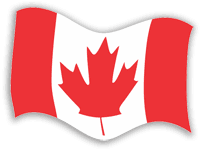
 #32 Confederation
#32 Confederation
by Patrick Brennan
| After 1841, the colony of Canada comprised Canada West,
overwhelmingly English-speaking and Protestant, and Canada East,
predominantly French-speaking and Roman Catholic, though with a
substantial English-Protestant minority. By the early 1860s, the
legislature, which gave Canada East and West equal weight, had
become paralyzed and the Canadas were headed for divorce. Canada
West longed to secure its economic future by annexing Britain
North America’s western territories. And given its larger
population, negotiating every measure with the French Canadian
minority was also a sore point. For their part, French Canadian
politicians opposed change for fear it would weaken their
minority position. Out of this hopeless political deadlock
emerged the idea of forging a larger Britain’s colonies on the Atlantic, meanwhile, were talking about their own regional union. At a conference in Charlottetown in 1864, a Canadian delegation, with an ample supply of champagne and the promise of a railway linking the Maritimes to Canada, persuaded their hosts of the merits of a much bolder scheme. In Quebec City, a second conference hammered out the constitutional details. A national parliament would be elected on the basis of “rep by pop,” or representation by population, ensuring a very strong voice for the great plans of Canada West (and their business allies in Canada East). An appointed Senate was to represent regions, helping to protect the interests of the Maritimes which would be outnumbered almost four to one by the population of the two Canadas. The conference adopted a federal system largely to ease French Canadian fears of drowning in an even larger English-speaking Protestant sea. The newly created provinces, including a separate Quebec, would control purely local affairs, notably the vital questions of language and culture. Still, Confederation talk sparked enthusiasm only in Canada West. In Canada East, the powerful English-speaking minority’s fear of French domination was eased by guarantees that minority language and religious rights would be protected. Many French Canadians feared Quebec would have less political power in the new national parliament, but the influential Roman Catholic Church welcomed the religious and cultural protections guaranteed by federalism. Convincing the Maritime colonies proved far harder. Their people had little in common with Canada save a shared British allegiance. Newfoundland and Prince Edward Island did not even put Confederation to a vote. And when anti-Confederates won a landslide election victory in New Brunswick in 1865, and Nova Scotia’s government retreated, the great dream seemed dead. External developments saved the day. The threat of American reprisals against British North America in retaliation for British support of the Confederacy in the American civil war alarmed the British government. If united, the colonies could be made responsible for their collective defence, a face-saving way for the British to get out if the Americans really did invade. In 1866, attacks by Irish-American Fenians on New Brunswick caused panic, bringing home to New Brunswickers the advantages of joint defence plans with Canada. Finally, Washington’s announcement that it would end the Reciprocity (Free Trade) Agreement with British North America in 1866 forced Maritimers to look to Canadian markets to replace lost American ones. In a new election, New Brunswickers voted for Confederation, only a year after the idea had been rejected. Given courage by its neighbour’s vote, the Nova Scotia legislature also endorsed the plan. With everyone finally in agreement, the British North America Act, creating the Dominion of Canada, quickly passed in the British parliament, to take effect on July 1, 1867. Some British North Americans had wanted the name the Kingdom of Canada, but most feared it would have been too British-sounding for American ears. The Dominion’s impressive motto, a mari usque ad mare — from sea to sea — spoke volumes about both Confederation’s dream and its purpose. Anti-Confederation forces swept all but one of the Nova Scotia seats in the first national election, but the new federal government refused to delay its plans for expansion. Both Ottawa and London considered Confederation permanent and anti-Confederation sentiment soon faded away. Canada eventually did stretch from sea to sea with Manitoba joining in 1870, British Columbia in 1871, Prince Edward Island in 1873, and Newfoundland finally coming aboard in 1949. Federalism, while necessary for the Fathers of Confederation to reach agreement, created continuing tensions between the national and provincial governments. And the failure to protect French-speaking minorities outside Quebec in the British North America Act soon strained an already fragile national unity. Yes, Confederation was a forced creation, a process driven by the elites, not the peoples’ will. That said, creating Canada required enormous vision, and given the many obstacles that had to be overcome, its achievement was a triumph thanks to a handful of dedicated men in the colonies. But it was John A. Macdonald, friendly, crafty, and tirelessly committed, who was Canada’s indispensable man. Next Instalment: Ontario: Giant of Confederation The Canadian Experience is a 52-week history series designed to tell the story of our country to all Canadians. Sponsored by Multimedia Nova Corporation and Diversity Media Services partners, the series features articles by our country’s foremost historians on a wide range of topics. Past articles and author bios are available at http://www.cdnexperience.ca. The Canadian Experience is copyright ©2010-2011 Multimedia Nova Corporation. |
List of published "Canadian Experience" articles |
The Canadian Experience communicates to
us about the many facets of Canada, the people, the Charter, brings us
reality and creates understanding.
Copyright ©2010 Echoworld Communications. All rights
reserved

